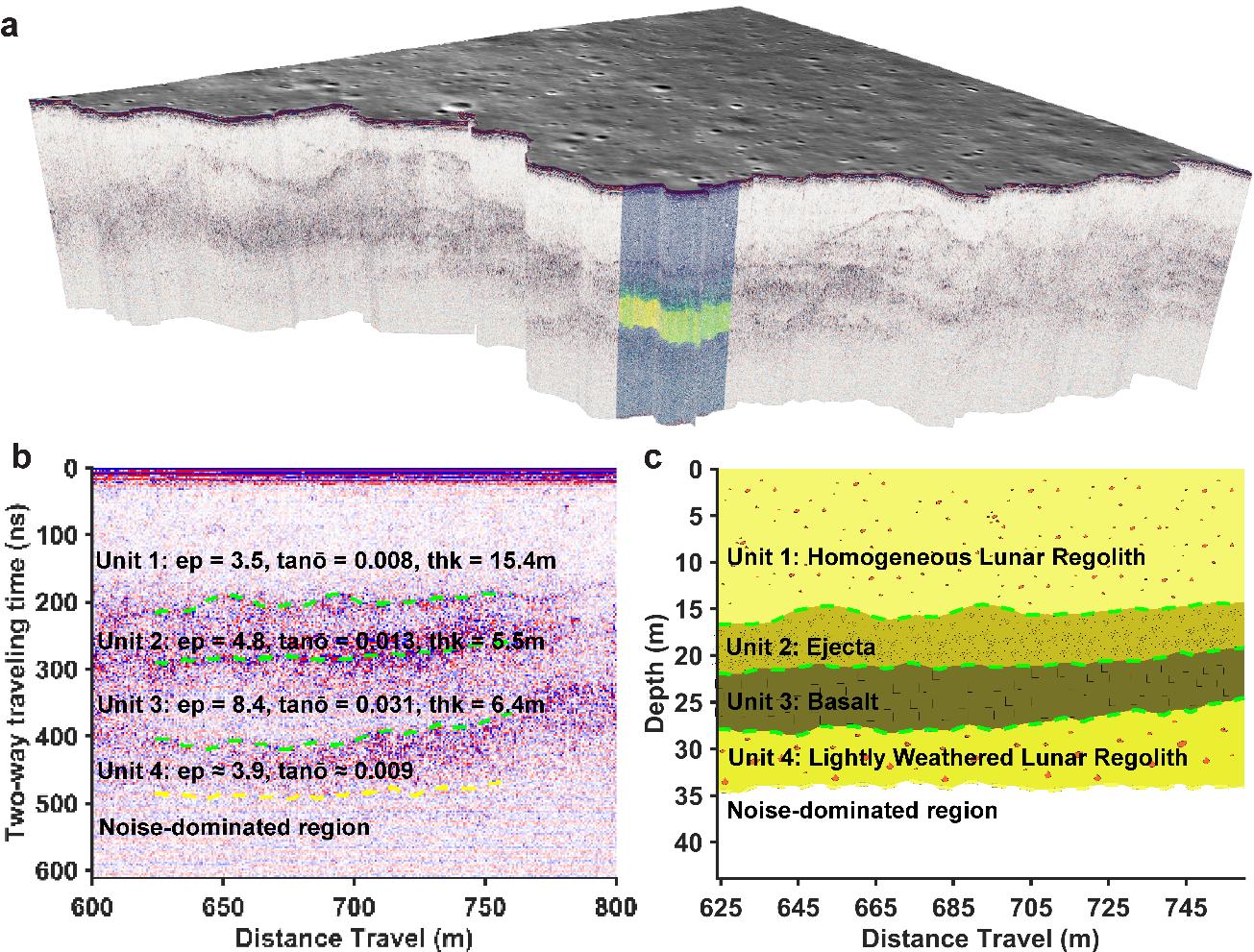On March 5, 2025, the research team led by Prof. Ding Chunyu from the Institute for Advanced Study, Shenzhen University (IAS-SZU) published a paper titled "Quantitative Analysis of Subsurface Dielectric Properties by Chang'E-4 Lunar Penetrating Radar Over Lunar Days 24–31" in the prestigious remote sensing journal IEEE Transactions on Geoscience and Remote Sensing (SCI, JCR Q1, IF=7.5). Shenzhen University is the primary affiliation of this research, with graduate student Qiu Xiaohang from IAS-SZU as the first author and Prof. Ding Chunyu as the corresponding author.
The Chang'E-4 mission, humanity’s first soft landing on the far side of the Moon, has seen its Yutu-2 rover operate for 65 lunar days and traverse a cumulative distance of 1,617.28 meters as of March 2024. This study focuses on radar data collected during lunar days 24–31, covering approximately 120 meters of the lunar surface. The team conducted a quantitative analysis of the shallow subsurface layered structures (up to ~40 meters depth) in the Chang'E-4 landing area. By innovatively applying the Finite-Difference Time-Domain (FDTD) method, the researchers successfully decoded horizontal reflection signals in the radar images, quantitatively unveiling the spatial distribution and dielectric properties of four distinct subsurface layers. These layers were redefined as the homogeneous regolith layer, ejecta layer, basalt layer, and lightly weathered regolith layer, providing critical evidence for recent volcanic activity in the region. The study established a direct link between the dielectric characteristics of lunar materials and their geological evolution, offering a quantitative framework for understanding subsurface stratigraphy.
This research was supported by the National Natural Science Foundation of China (Grants No. 12473063, 12461160265, 62227901) and the Shenzhen University 2035 Program for Excellent Research (No. 2024C009).
Paper link: https://doi.org/10.1109/TGRS.2025.3547897

Figure 1. Schematic diagram of the four-layer shallow subsurface structure of the Moon, as revealed by Yutu-2’s lunar-penetrating radar (Image credit: Research team).


